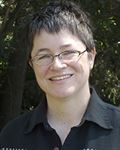
 There’s a tendency for researchers to only study leftist movements, but a new book co-edited by UC Merced sociology Professor Nella Van Dyke analyzes the Tea Party movement.
There’s a tendency for researchers to only study leftist movements, but a new book co-edited by UC Merced sociology Professor Nella Van Dyke analyzes the Tea Party movement.
“We need to understand them, too. They have different dynamics,” Van Dyke said. “It appeared so suddenly and exploded onto the American political scene, it’s important for us to study.”
The book, “Understanding the Tea Party Movement,” looks at why and how the movement emerged, how it’s related to past conservative populism and asks critical questions about its ultimate fate. It was recently released by Ashgate Publishing, and is one of the first academic books to explore the movement.
The Tea Party movement began across the United States in April 2009 as a series of tax day protests. It expanded into town hall meetings about health care reform and led to a national demonstration in September 2009 at the U.S. Capitol. Tea Party candidates went on to win seats during the November 2010 election, though President Barack Obama won re-election in 2012.
Van Dyke, who specializes in social movements, organized a session on the Tea Party at the American Sociological Association conference in 2010, which led to a book deal.
Van Dyke said the Tea Party shares some of characteristics with the 1990s militia movement, an area of research for her. Both movements were reactive, responding to political threats, and they both emerged during periods of economic hardship.
With Democratic politicians leading the federal government, conservative voters didn’t have as much direct influence. Van Dyke said creating a social movement is a way people can get their voice heard when they have limited ability to exercise political power through the institutional system.
Protests have usually been tools of the leftist movements and even disparaged by conservative leaders, so it was interesting to watch the Tea Part adopt and embrace these tactics, Van Dyke said.
Van Dyke wrote the introduction with co-editor and UC Irvine Professor David S. Meyer and co-authored a chapter with UC Merced Professor Paul Almeida that explores the Republican Party’s involvement in the movement and its contribution to the movement’s mobilization.
Other chapters looks at the movement’s identity and ideology, as well as what’s new with the movement.
What happens with the movement will depend on institutional politics and whether the Tea Party remains in an antagonistic role with government or gains more power, Van Dyke said.






